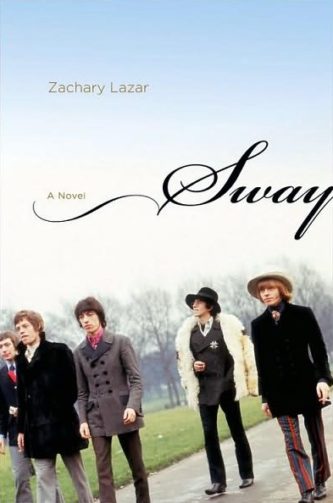 By ZACHARY LAZAR (Little, Brown; 2008)
By ZACHARY LAZAR (Little, Brown; 2008)
The sixties get a fresh re-imagining in this lyrical and disquieting novel, which focuses on the final year of that decade, when the idealism that had fueled the counterculture over the previous nine years came to an abrupt end. It was then that three pivotal events occurred: the drowning death of Rolling Stones founder Brian Jones, the Charles Manson instigated Tate-LaBianca murders, and the Rolling Stones’ notorious Altamont concert, which was marked by chaos, brutality and an on-camera stabbing.
Eschewing the standard novelistic motif of using fictional characters to headline historical sagas, author Zachary Lazar audaciously relates these events through the viewpoints of several real-life figures. These include the aforementioned Mr. Jones, the Manson follower Bobby Beausoleil, and Anita Pallenberg, the Italian-born seductress who romanced Jones. Uniting them all is a most unexpected figure: the underground filmmaker Kenneth Anger, who had a close relationship with Beausoleil and cast the Stones’ headliner Mick Jagger in the 1969 film INVOCATION OF MY DEMON BROTHER.
It’s been opined by some that occult forces may have been at work in the late sixties, and this book goes along with that surmise. The supernatural catalyst here is a NECRONOMICON-like occult text entitled THE SEPHIROTH, which inspires Anger (who in reality was an adherent of Aleister Crowley) and brings about the calamities of ‘69.
Lazar’s characterizations of his iconic protagonists ring true, from the fatally naïve Bobby Beausoleil to the tough yet sensitive and artistic Kenneth Anger. Most unforgettable is the book’s portrayal of Brian Jones, an unstable dreamer who grows increasingly detached from reality as the debilitating effects of drugs and jealousy take their toll.
Other compelling real-life figures portrayed in these pages include the Stones’ guitarist Keith Richards, a painfully shy individual who grows into a steely and flamboyant figure as the band’s popularity skyrockets; Marianne Faithful, who takes the place of Anita Pallenberg in the Stones’—and Kenneth Anger’s—affections; and the darkly charismatic Charles Manson, who only makes a couple brief appearances but definitely leaves a mark.
As for the twin specters of the Tate-LaBianca murders and Altamont, they’re foreshadowed throughout the narrative, which jumps back and forth between the early years of the sixties—and also the 1930s, when Kenneth Anger was a child–and 1969, when everything comes to a head. It’s all done up in extremely dreamy and incandescent prose that fits the era’s druggy vibe. My one complaint? That several other pivotal late sixties figures who figured into the events related in this account (such as John Lennon, Jim Morrison, Susan Atkins, Roman Polanski, Dennis Hopper and Anton LaVey) are left out of the mix. This novel, in other words, could have been a lot longer, although what’s here is pretty damn fine nonetheless.
